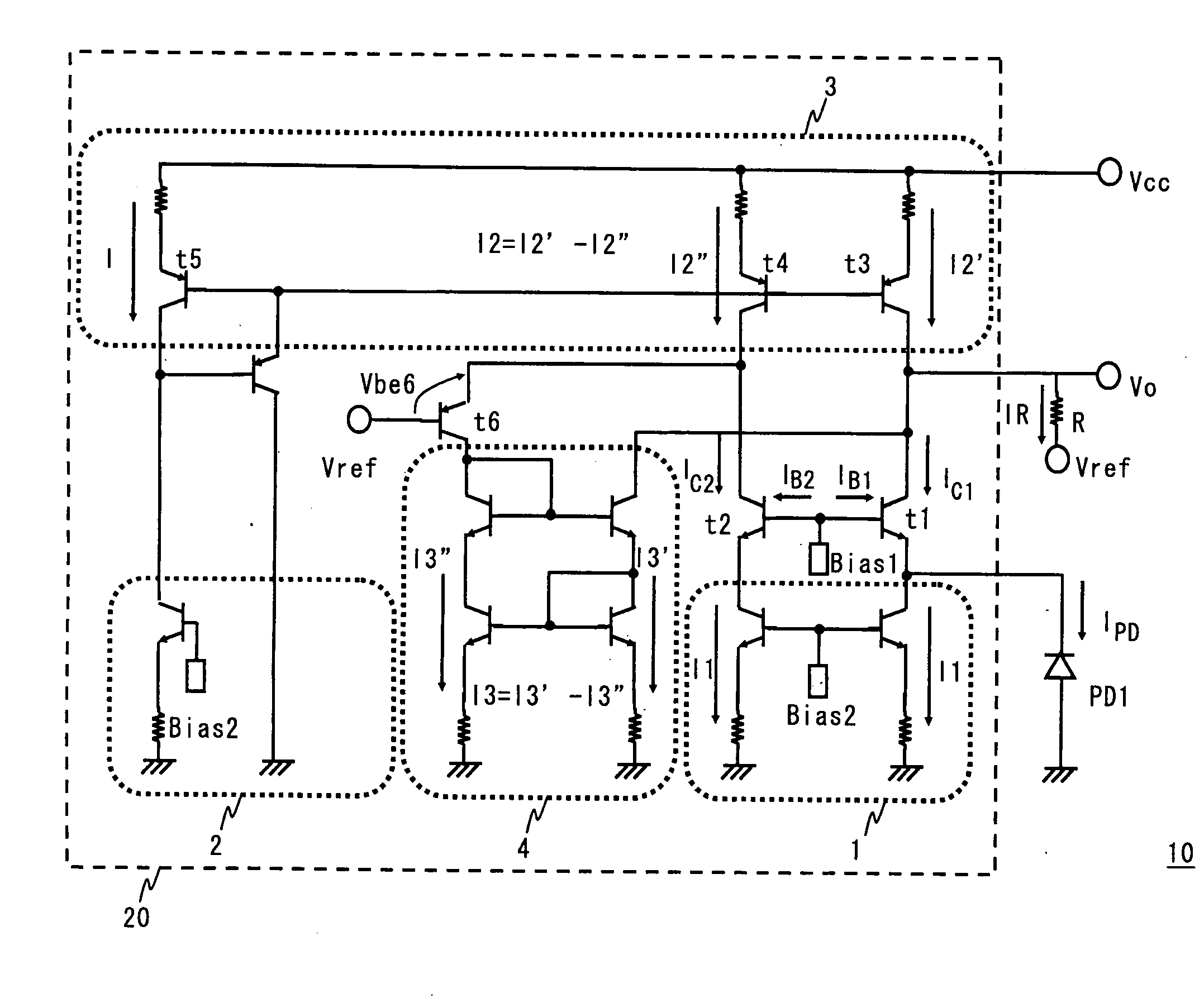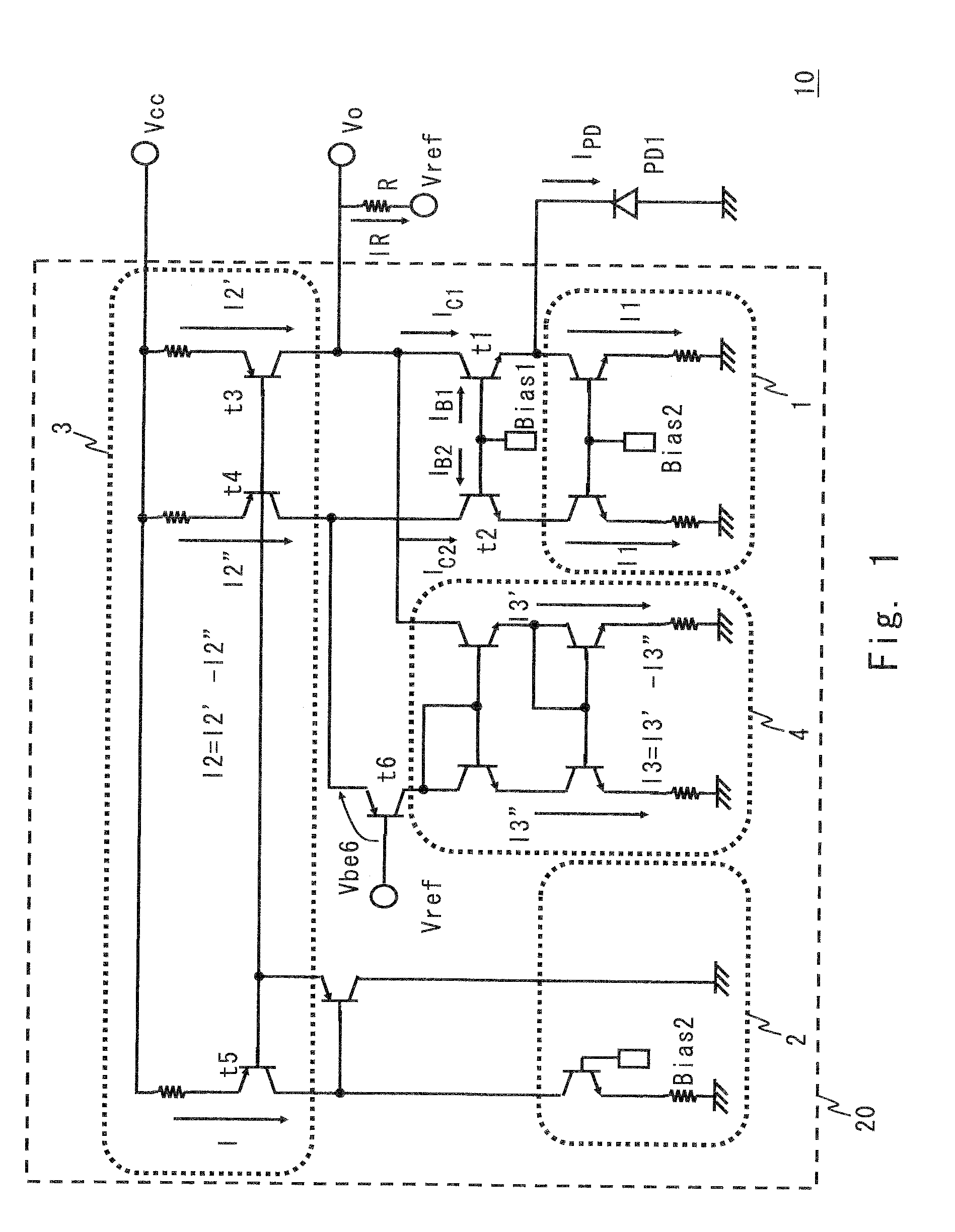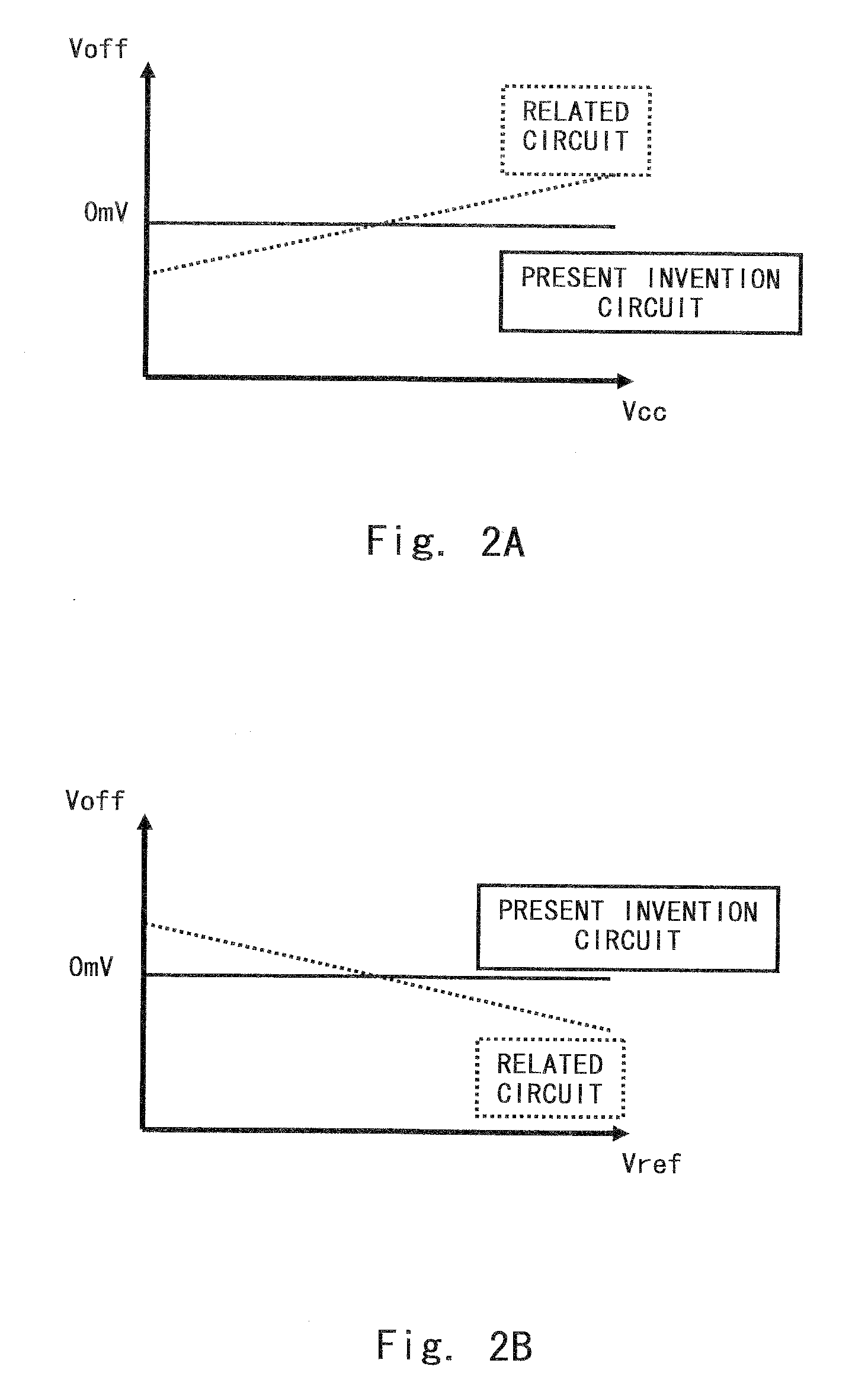Buffer circuit and photoreceiving circuit using the same
a buffer circuit and photoreceiving circuit technology, applied in the direction of pulse generators, pulse techniques, oscillation generators, etc., can solve problems such as not divulging means, and achieve the effect of reducing the power supply voltage dependence of offset voltage and good power supply voltage dependen
- Summary
- Abstract
- Description
- Claims
- Application Information
AI Technical Summary
Benefits of technology
Problems solved by technology
Method used
Image
Examples
first exemplary embodiment
[0037]Referring to FIG. 1, a description is given of a photoreceiving circuit provided with a buffer circuit according to first exemplary embodiment of the present invention. FIG. 1 is a diagram showing a configuration of a photoreceiving circuit 10 provided with a buffer circuit 20 according to the first exemplary embodiment. As shown in FIG. 1, the photoreceiving circuit 10 according to the first exemplary embodiment is provided with a photoreceiving device PD1 and the buffer circuit 20. The buffer circuit 20 includes a first constant current circuit 1, a second constant current circuit 2, a first mirror circuit 3, and a second mirror circuit 4. The present invention relates to a photoreceiving circuit that reduces influence of parasitic capacitance of the photoreceiving device PD (photodiode), which functions as an input source, and that inhibits power supply voltage variation of offset voltage characteristics.
[0038]As shown in FIG. 1, PD1 functioning as an input source is connec...
second exemplary embodiment
[0072]Referring to FIGS. 3 through 5, a description is given of a photoreceiving circuit 10′ using a buffer circuit according to second exemplary embodiment of the present invention. FIG. 3 is a diagram showing a configuration of the photoreceiving circuit 10′ according to the second exemplary embodiment. FIG. 4 is a diagram showing a configuration of a first buffer circuit 21 in FIG. 3, and FIG. 5 is a diagram showing a configuration of a second buffer circuit 22 in FIG. 3. In FIGS. 3 through 5, the same reference numeral is used for an element identical to that of FIG. 1, and the description is omitted as appropriate.
[0073]As shown in FIG. 3, in the photoreceiving circuit 10′, the first buffer circuit 21 is connected to an inverting input terminal (input side) of an I / V conversion operational amplifier 13, which is a differential operational amplifier for current-voltage conversion, and the second buffer circuit 22 is connected to a non-inverting input terminal (reference side). A...
third exemplary embodiment
[0076]Referring to FIG. 6, a description is given of a photoreceiving circuit provided with a buffer circuit according to third exemplary embodiment of the present invention. FIG. 6 is a diagram showing a configuration of a photoreceiving circuit 10″ according to the third exemplary embodiment. In the photoreceiving circuit 10″ shown in FIG. 6, although the circuit configuration is approximately equivalent to that of the first exemplary embodiment, improvement is made for the difference between the collector-emitter voltages of the transistors t3 and t4 of the first mirror circuit 3, and further, the photoreceiving circuit 10″ has a configuration of allowing improvements in absolute value of the offset voltage.
[0077]As shown in FIG. 6, in the photoreceiving circuit 10″, an emitter of a transistor t7 is connected to a base of a transistor t6 determining the collector voltage of the transistor t4. In addition, the base voltage of the transistor t7 is voltage Vref.
[0078]In the first ex...
PUM
 Login to View More
Login to View More Abstract
Description
Claims
Application Information
 Login to View More
Login to View More - R&D
- Intellectual Property
- Life Sciences
- Materials
- Tech Scout
- Unparalleled Data Quality
- Higher Quality Content
- 60% Fewer Hallucinations
Browse by: Latest US Patents, China's latest patents, Technical Efficacy Thesaurus, Application Domain, Technology Topic, Popular Technical Reports.
© 2025 PatSnap. All rights reserved.Legal|Privacy policy|Modern Slavery Act Transparency Statement|Sitemap|About US| Contact US: help@patsnap.com



